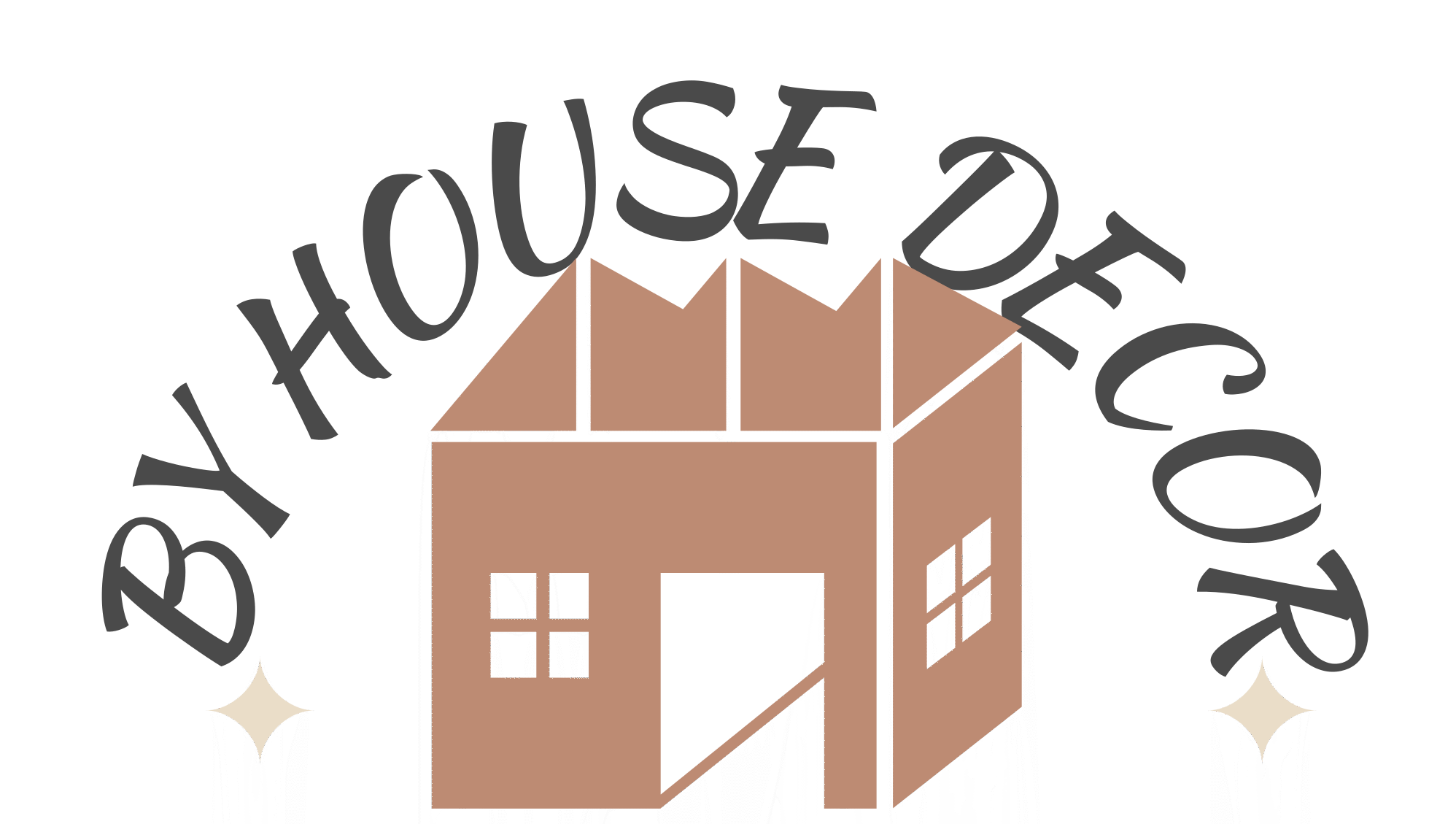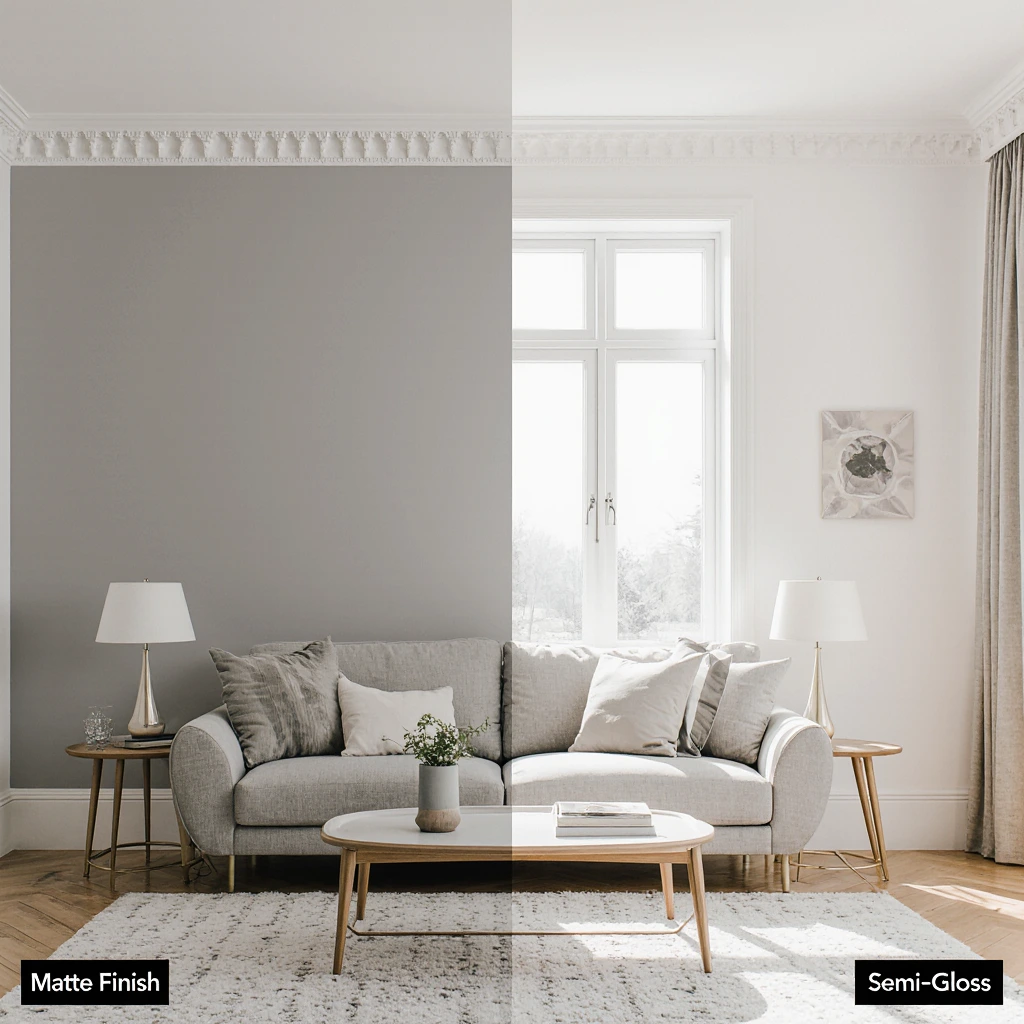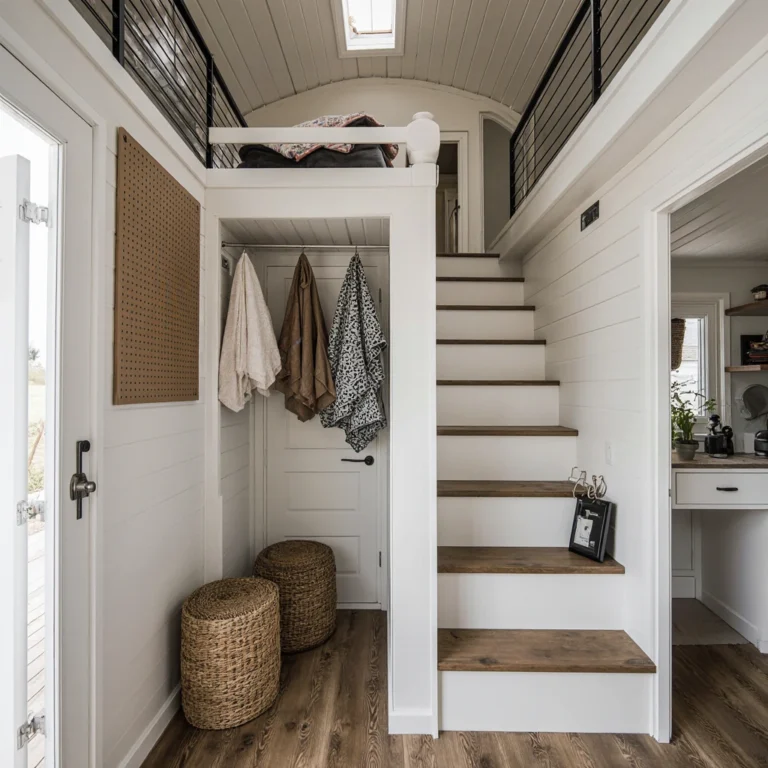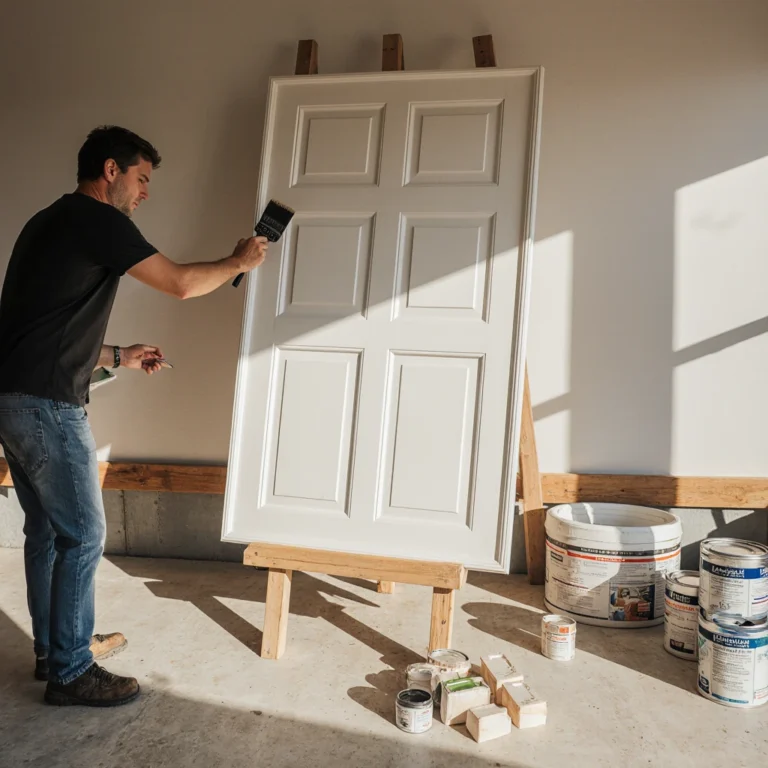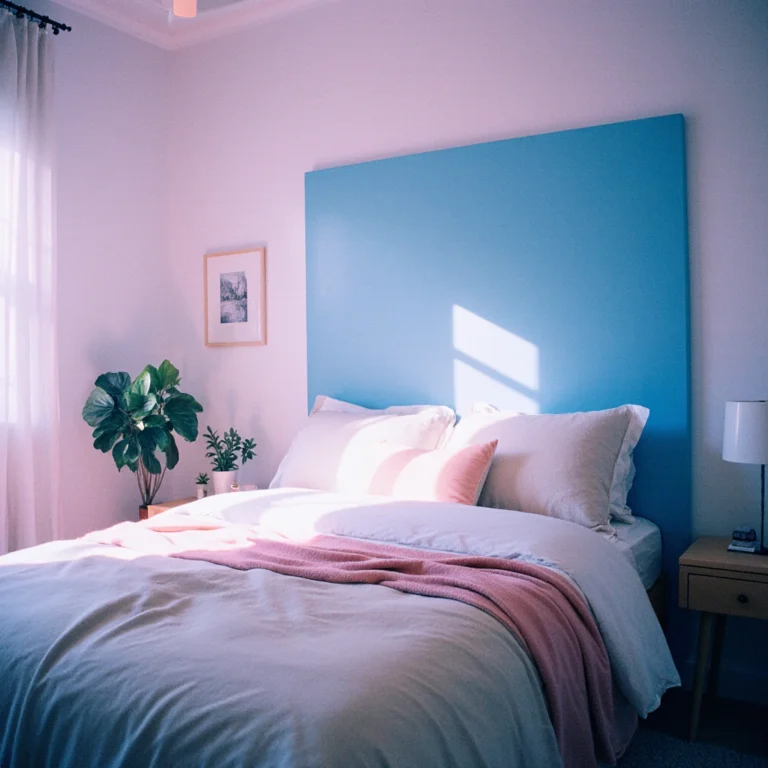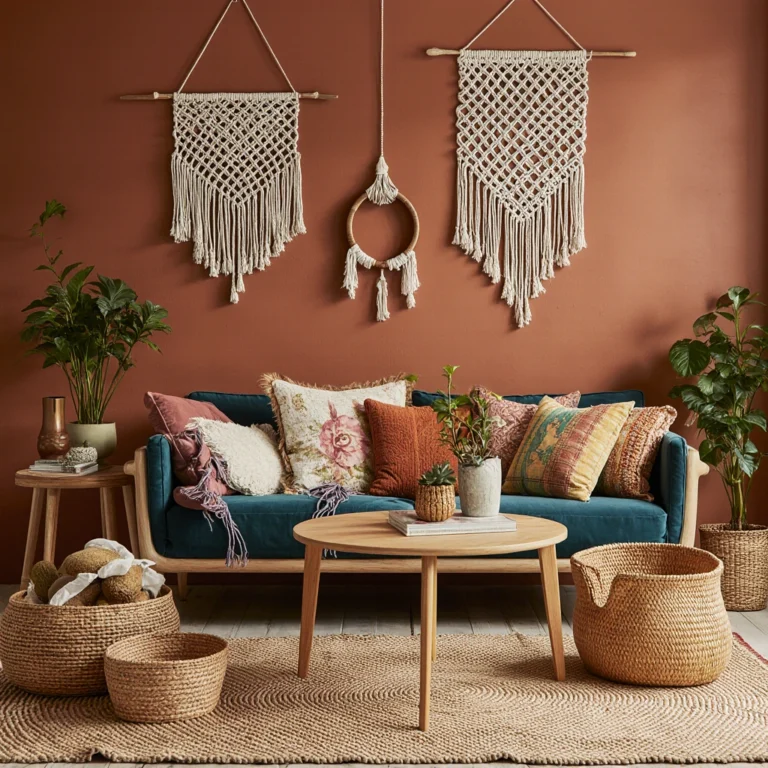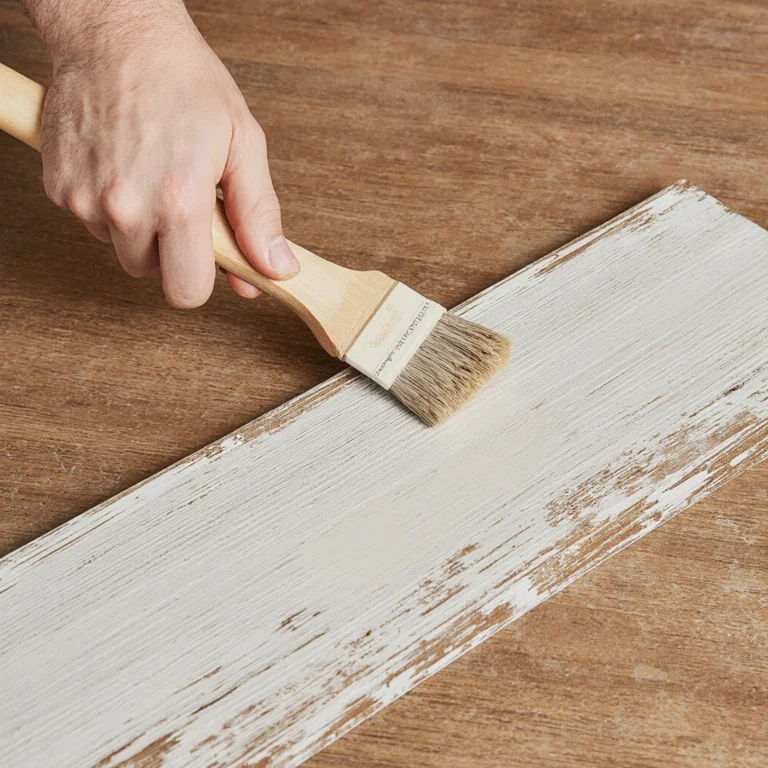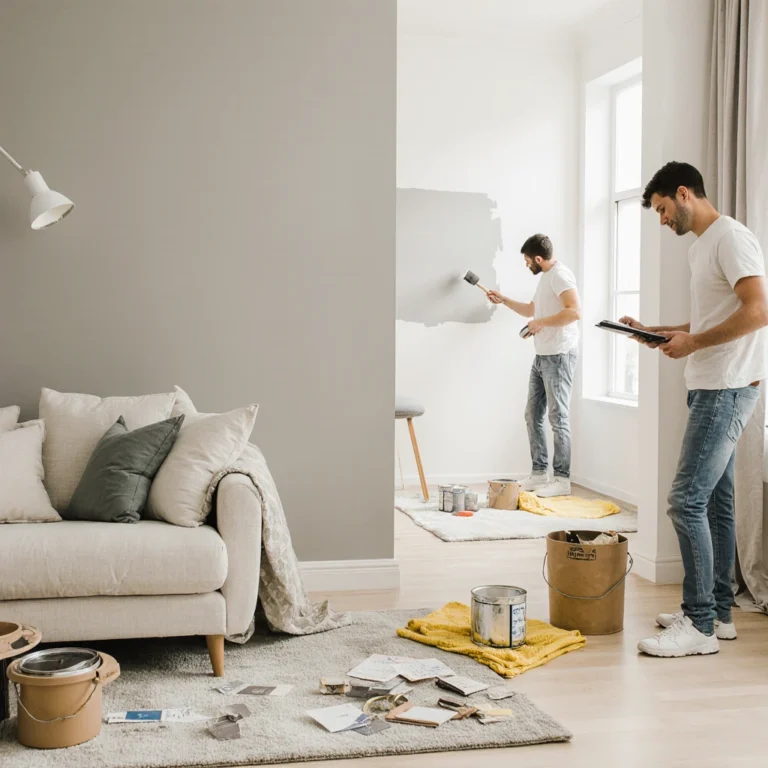Interior Paint Ideas: Revive Your Home with Perfect Color Choices
Table of Contents
Are you looking for fresh interior paint ideas to bring a fresh new look to your home? You’ve come to the right place. Choosing the perfect paint colors can transform your living space, create an atmosphere that reflects your personality, and increase your property’s value. Whether you’re planning a complete home renovation or just a single room, choosing the right paint can make all the difference between an ordinary home and one that feels like your own sanctuary.
In this comprehensive guide, we’ll explore everything from paint finishes and color psychology to cost-effective tips and modern trends. You’ll discover how to choose harmonious colors, avoid common painting mistakes, and maintain your freshly painted walls for years to come. Let’s dive into the world of interior paints and unleash your home’s true potential.
Types of Paint Finishes
Understanding paint finishes is crucial to achieving professional results in interior painting projects. Each finish serves a different purpose and creates distinct visual effects.
The flat/matte finish provides perfect coverage and conceals imperfections beautifully, making it ideal for bedrooms and living rooms with limited traffic. The downside? It’s harder to clean and can show signs of wear and tear. This finish works well on ceilings and walls with unsightly texture.
The eggshell finish offers a subtle sheen that’s more durable than matte paint, concealing minor wall imperfections. It’s an excellent choice for dining rooms, bedrooms, and hallways. Its subtle sheen makes it easier to clean than matte finishes, while maintaining a sleek, sophisticated appearance.
The satin finish offers greater durability and moisture resistance, making it ideal for high-traffic areas such as kitchens, bathrooms, and children’s rooms. The smooth, pearl-like finish reflects light beautifully and can be cleaned easily. However, it may highlight wall imperfections more than flat finishes.
The semi-gloss finish offers superior durability and excellent stain resistance, making it ideal for trim, doors, and cabinetry. Its reflective surface makes colors appear more vibrant and rooms appear brighter. Its only drawback, however, is that it exposes all imperfections, so proper wall preparation is essential.
Gloss finish offers maximum durability and is the easiest to clean, making it suitable for high-humidity areas and surfaces that require frequent cleaning. While it produces stunning, vibrant colors, it requires perfect surface preparation to highlight all imperfections.
Best Paint Colors for Every Room
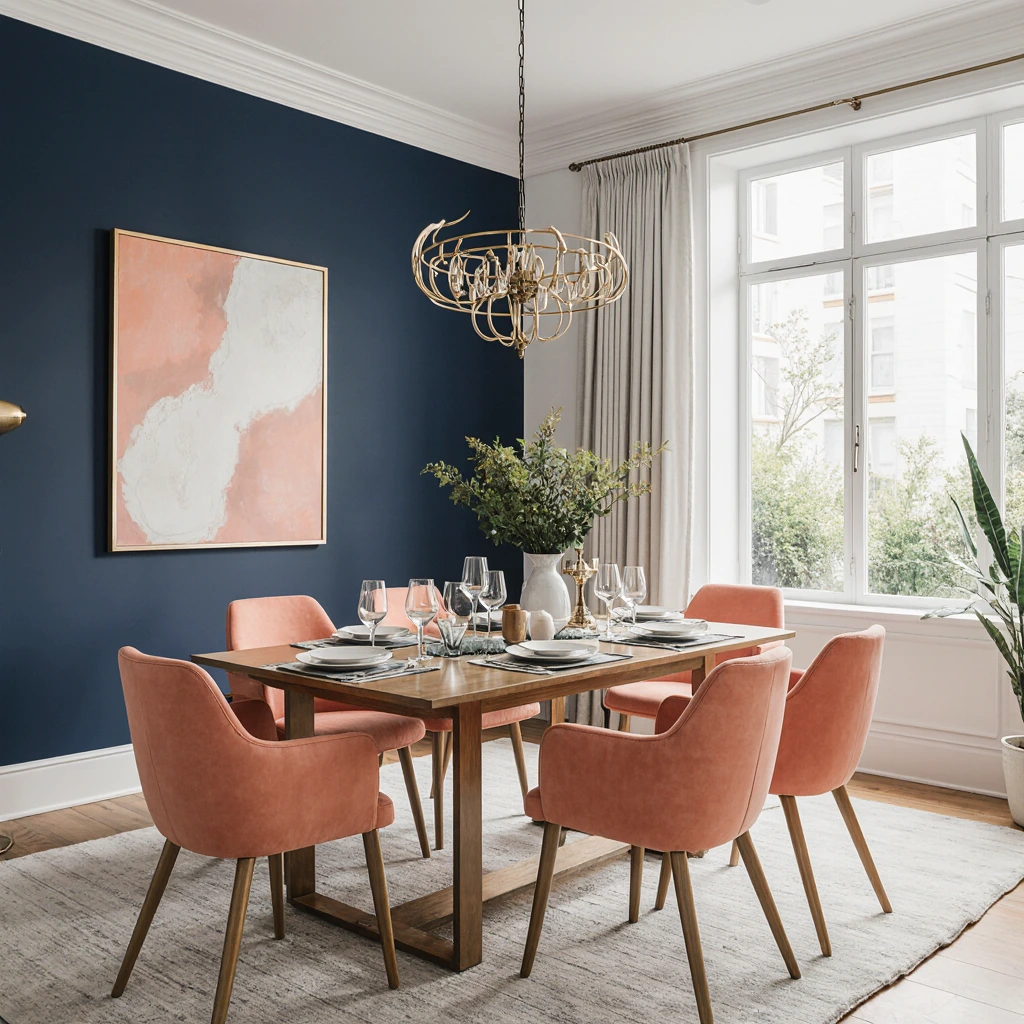
Choosing the right colors for each room requires understanding how each space works and the impact of color on mood and perception.
Living Room Paint Ideas should create a welcoming atmosphere for relaxation and entertaining. Warm neutrals like gray (a mix of gray and beige), soft blue, and earthy tones add a touch of elegance. Try using rich jewel tones like deep emerald or navy for accent walls, which add a touch of sophistication without overwhelming the space. Light colors make rooms appear larger, while darker colors create an intimate and relaxing atmosphere. Bedroom Colors should promote rest and tranquility. Scientific studies have shown that calming shades of blue, lavender, and sage green lower heart rates and improve sleep. Warm neutral colors, such as cream, soft gray, and pale pink, create a calming atmosphere. For master bedrooms, choose sophisticated colors like charcoal with white trim or soft taupe for a luxurious hotel feel.
Kitchen paint colors should balance practicality with elegance. White remains popular because it gives spaces a clean and bright feel, but don’t overlook warm grays, soft yellows, and sage greens for a personal touch. Bold colors, such as navy or dark green, work well for lower cabinets when paired with light upper cabinets or walls.
Bathroom paint ideas should consider humidity and lighting conditions. Light colors make small bathrooms feel spacious, while spa-like blues and greens create a relaxing atmosphere. Semi-gloss or satin finishes are essential for resistance to humidity. Try bold wallpaper-effect painting techniques for bathrooms where you can unleash your bold spirit.
Paint Color Combinations and Patterns
Creating harmonious color schemes throughout your home requires an understanding of color harmonies and current design trends.
Neutral colors have always been popular, featuring a mix of white, gray, beige, and soft taupe. The key is to vary the base colors—cool grays pair beautifully with crisp white, while warm beige tones complement creams. Add interest through texture and color variations rather than using bold colors.
Monochromatic schemes use different shades of the same color family, creating sophisticated and harmonious spaces. Try varying shades of light blue to navy, or explore a whole range of greens from sage to forest green. This approach is especially ideal for smaller homes where you want visual flow between rooms.
Complementary color combinations combine colors opposite each other on the color wheel to create dynamic and vibrant spaces. Classic combinations include blue and orange (such as navy and warm coral), or purple and yellow (lavender and soft gold). Use one color as a dominant color and the other as an accent color.
Analogous color schemes combine colors that are close together on the color wheel, creating naturally harmonious color palettes. Blue, green, and purple combinations work well in bedrooms, while yellow, orange, and red combinations create warm and inviting living spaces.
Seasonal color inspirations help you choose colors. Spring color palettes feature fresh greens, soft pinks, and bright yellows. Summer brings in crisp whites, navy blues, and touches of coral. Autumn brings warm oranges, deep reds, and golden yellows, while winter brings deep navy, forest green, and elegant grays.
DIY Painting Tips
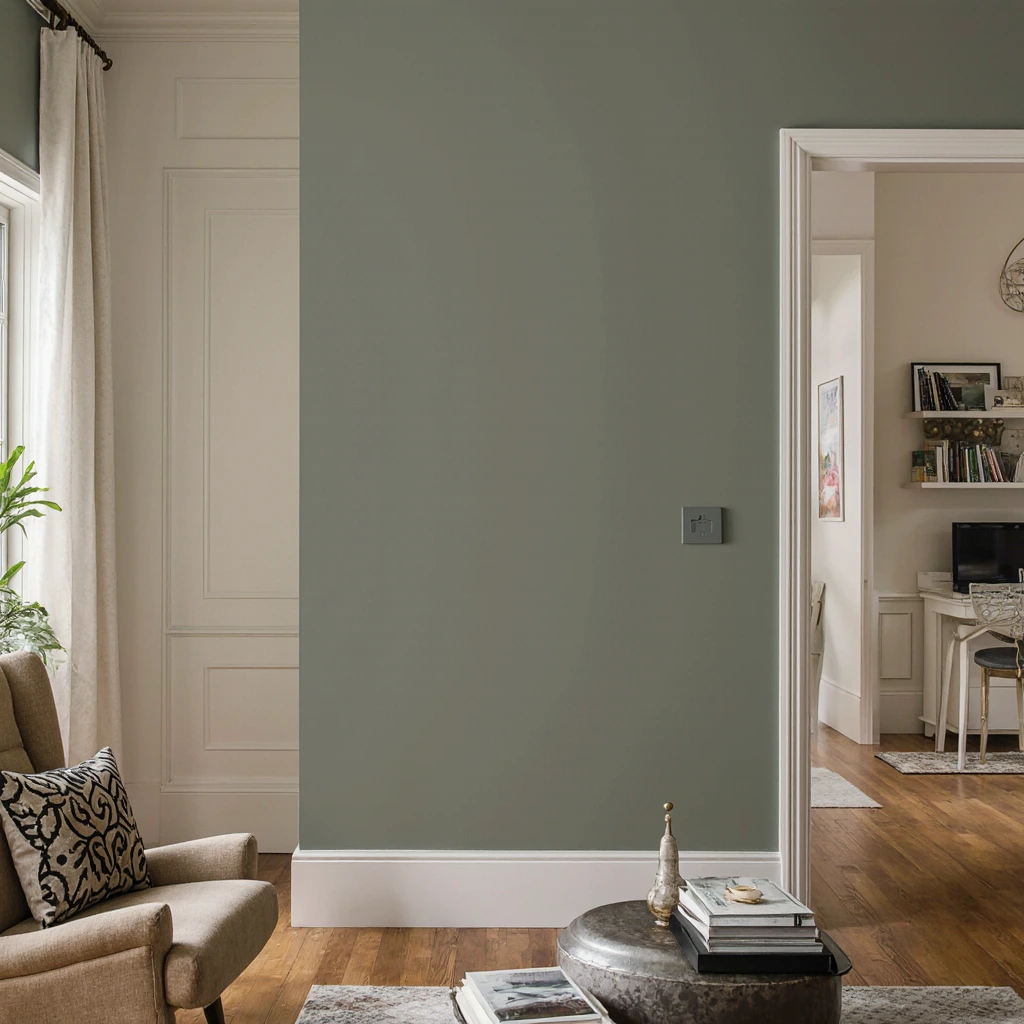
Achieving professional results requires proper preparation, tools, and techniques.
Essential tools include high-quality brushes (angled brushes for cutting, flat brushes for large areas), premium paint rollers of the appropriate length, masking tape, protective drop cloths, primer, and paint trays with liners. Invest in quality tools—they make a huge difference to the final result and will last for multiple projects.
Preparation Steps: These are essential for long-lasting results. Clean walls thoroughly, fill holes and cracks with filler, sand rough areas smoothly, and apply a primer when changing colors drastically or painting spots. Remove plug covers and light switch plates, and protect furniture and floors with plastic sheeting.
Painting techniques for professional results include trimming edges with a brush before painting, maintaining a wet edge to avoid overlapping marks, applying paint in W or M patterns with paint rollers, and working in manageable sections. Always paint from top to bottom and use long, smooth strokes for even coverage.
Common application mistakes to avoid: Overloading brushes or rollers, which causes drips and uneven coverage; rushing the process without enough drying time between coats; using cheap tools that leave streaks or shed hairs; and not maintaining consistent lighting while painting, which can lead to missed areas.
Cost and Budget Tips
Understanding painting costs helps you budget effectively for your project and identify opportunities to save money.
Room costs vary depending on size and complexity. A standard 12×12 bedroom typically costs between $200 and $400 for materials needed for DIY projects, including primer, paint, and supplies. Larger living rooms (15×20) can cost between $300 and $600, while smaller bathrooms can cost between $100 and $200. Professional painting adds between $300 and $800 per room in labor costs.
Money-saving strategies include purchasing paint during seasonal sales (often at a 30-40% discount), choosing a high-quality paint that covers better in fewer coats, purchasing a slightly more expensive, longer-lasting paint, and treating several rooms at once to reduce installation time and waste.
Eco-friendly options, such as low- or no-VOC paints, cost slightly more upfront but provide better indoor air quality and are often more durable. Many major paint manufacturers now offer comprehensive eco-friendly lines without sacrificing color selection or performance.
Paint quantity calculations prevent waste and save you the hassle of going to the store. One gallon typically covers 350-400 square feet with a single coat. Measure the room’s perimeter, multiply it by the ceiling height, subtract it for doors and windows, and then divide by the coverage rate. Always buy an extra 10-15% off for touch-ups and avoid inevitable calculation errors.
Paint Trends and Inspiration
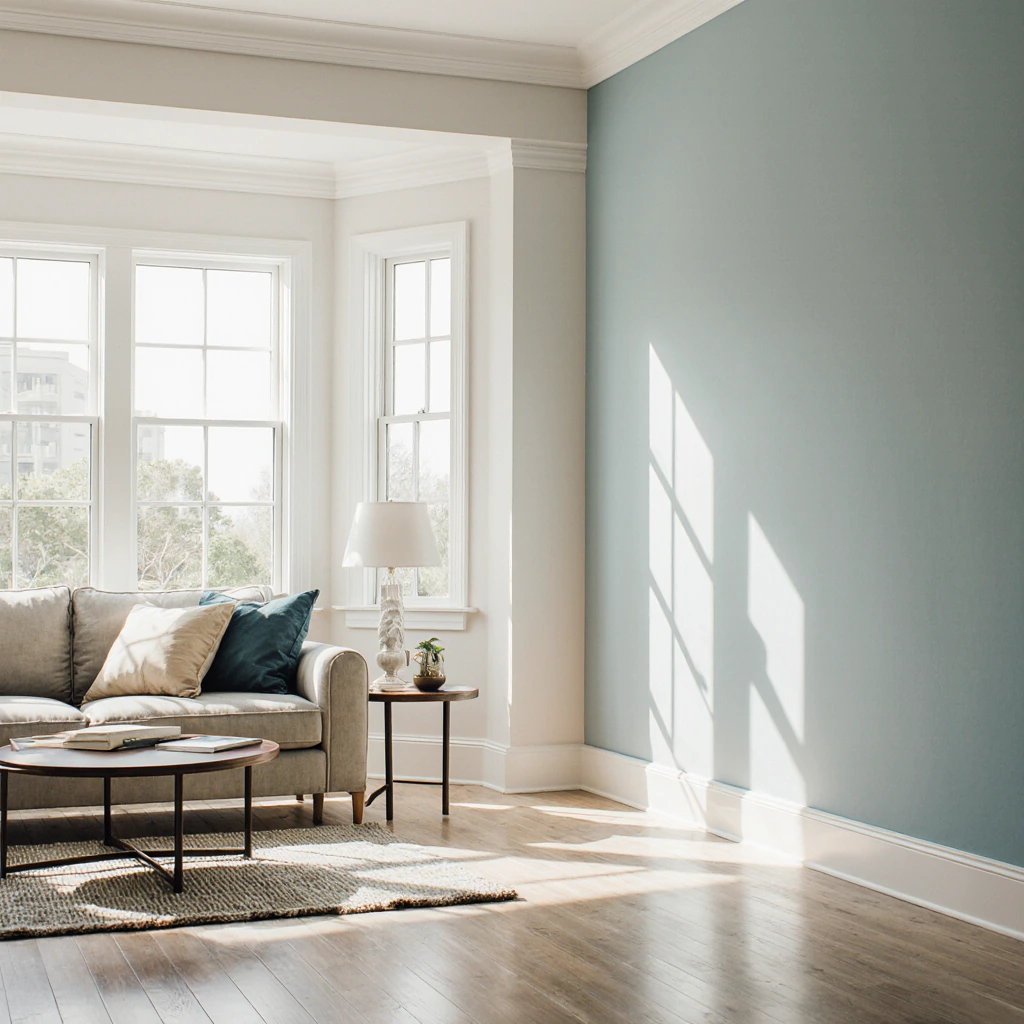
Keeping up with the latest paint trends helps create spaces that feel fresh and modern while maintaining a timeless appeal.
2025 Color Trends focuses on colors inspired by nature, with warm terracotta, sage green, and soft terracotta leading the way. Digital detox colors, such as soft lavender and calming blue, reflect our desire for calming spaces. Bold accent walls in deep forest green or rich burgundy add a distinctive touch without overwhelming spaces.
The Bio-Design Effect is fueling the popularity of colors inspired by nature. Natural grays, stone beiges, and botanical greens create a sense of connection with nature. These colors are particularly suited to urban environments, where people crave a connection with nature.
Technology integration influences color choices as our homes evolve. Neutral backgrounds allow smart home devices to blend in seamlessly, while distinctive colors highlight or conceal technology elements, depending on preference.
Global Inspiration brings global color palettes to American homes. Mediterranean blues and whites, Scandinavian grays and whites, and soothing earth tones inspired by Japan offer sophisticated alternatives to traditional American color schemes.
Common Home Painting Mistakes
Avoiding these common painting mistakes saves you time, money, and frustration, while ensuring professional results.
Poor surface preparation causes most paint failures. Skipping a primer when needed, not cleaning walls thoroughly, or not filling holes and cracks can all lead to poor paint adhesion, uneven coverage, and premature paint failure. Always invest time in good preparation, as it is the foundation of any successful paint job.
Choosing the wrong paint for specific areas can cause performance problems. Using matte paint in high-humidity areas can lead to mold and mildew problems, while using glossy paint on unfinished walls will highlight every flaw. Match the paint finish to the function of the room and the condition of the walls for best results.
Color selection mistakes often result from not testing colors in the actual lighting conditions of the room. Paint colors can vary significantly under natural daylight compared to artificial lighting. Always test paint samples on walls and observe them at different times of the day before making a final decision.
Application technique problems include rushing the process, not keeping edges wet, applying the paint too thickly, or not allowing enough drying time between coats. These problems result in streaks, overlap marks, and uneven coverage that are difficult to fix without starting over.
How to Maintain Painted Walls
Proper maintenance prolongs the life of the paint and keeps your home decor looking its best for years.
Regular Cleaning involves cleaning the walls monthly with a microfiber cloth, immediately cleaning up spills and marks, and washing the walls annually with a mild soap solution. Different types of paint require different cleaning methods—matte paints require gentle care, while semi-gloss paints withstand more vigorous cleaning.
Retouching Strategies require proper storage of paint scraps for future use. Label paint cans with room names and purchase dates, store them in a temperature-controlled environment, and stir well before each use. Small touch-ups produce the best results when applied in the same way as the original paint.
Preventing damage includes using door seals to prevent damage to handles, installing chair rails in dining areas, placing rugs in high-traffic areas, and addressing moisture problems immediately. Prevention is always more cost-effective than repainting.
Long-term planning includes documenting paint colors and purchasing information for future reference. Take photos of completed rooms, save paint samples, and note colors that fit future projects or home sale considerations.
Conclusion
Refreshing your home with thoughtful interior paint ideas doesn’t have to be stressful or expensive. By understanding paint finishes, choosing the right colors for each room’s function, and following the right application techniques, you can achieve professional results that reflect your personal style and enhance your daily life.
Remember, great painting projects start with careful planning, quality materials, and expert execution. Whether you’re a fan of trendy earth tones, timeless neutrals, or bold colors, the secret is to create spaces that feel comfortable and inspired every day.
Try these paint ideas in your next home renovation and let us know how it turned out in the comments. Sign up for more home decor guides and expert advice to help you create your dream home!
Best Amazon Picks :
FAQs
What is the best paint for bathrooms?
Semi-gloss or satin-finish paints are best in bathrooms because they are moisture-resistant and easy to clean. Look for paints specifically labeled “bathroom paint” or “moisture-resistant” for best performance. Mold-resistant additives are also recommended in high-humidity environments.
How long does it take for paint to dry before another coat?
Most latex paints require two to four hours between coats, but please check the paint instructions. Oil-based paints typically require six to eight hours. Factors such as humidity, temperature, and ventilation affect drying time. If in doubt, wait longer rather than rushing.
How do I choose a color that matches my existing furniture?
Take photos of your furniture in natural light and bring them with you when choosing paint colors. Many paint stores offer color matching services, or you can use removable fabric swatches to test with paint samples. Consider whether you want colors that match, complement, or contrast with your furniture.
What is the most popular interior paint color right now?
Warm whites with a mix of gray and beige remain popular for their versatility and timeless appeal. However, earthy tones, such as sage green, warm clay gray, and soft terracotta, are also gaining popularity as people seek to enhance their connection to nature in their homes.
